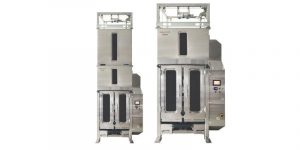Strong demand for large-scale single-use systems has driven Thermo Fisher to launch bioreactors with capacities beyond the standard limits.
Single-use bioreactors have become a staple in the bioprocess industry, both for clinical and commercial batches.
Traditionally, these have been restricted in size due to pressure challenges from the increased weight of the liquid medium in larger volume bags with 2,000 L being the upper limit. Thus, if biomanufacturers require larger volumes, they generally would run several systems in unison or opt for stainless-steel tanks.

Image c/o Thermo Fisher
But on the back of demand, bioprocess vendors have begun going beyond the 2,000 L volume. ABEC, for example, launched a 4,300 L bioreactor (with 3,500 L of working volume) in 2015, a 4,900 L system with a 4,000 L working volume in 2017, and in 2019 launched a 7,500 L single-use bioreactor with a working volume up to 6,000 L.
And now Thermo Fisher has joined the fold, launching the 3,000 L and 5,000 L HyPerforma DynaDrive single-use bioreactors first showcased at Biotech Week Boston in September 2019.
“We have had a phased launch approach starting with the smallest single-use bioreactor, 50 L DynaDrive, and now have recently launched the 3,000 L and 5,000 L single-use bioreactors,” a spokesperson from the vendor told us.
“We are seeing strong demand from pharmaceutical companies and CDMOs for all sizes of the new systems.”
Among the features the systems offer are increased scalability, improved turn-down ratio, and improved mixing. The firm also says the offering leads to a reduced vessel footprint, with minimized hardware optimized for perfusion cell culture processes to help save manufacturing suite space, with the 3,000 L and 5,000 L sharing the same footprint.
Normally, a firm like Thermo Fisher would have the opportunity to demonstrate such a product at one of a number of industry events. But with conferences like the upcoming BPI West being digital while the pandemic rages, the spokesperson said: “We are continuing to find collaborative and innovative ways to allow potential customers to understand the value that this offering brings to the market.”
